This article is designed to introduce readers to an essential, yet underrated component of rotating machinery – the “Mechanical Slip Ring“. The main thrust of this write-up is to provide a comprehensive overview of the device, detailing not just its basic definition and functionality, but more importantly, its relevance across different industries. The article aims to underscore the integral and multifaceted role played by mechanical slip rings in numerous applications, thereby demonstrating the importance of understanding this versatile device.
The article kicks off by familiarizing readers with mechanical slip rings and their varied types, followed by an exposition on their importance and function in rotational devices. We then delve into the working principle of mechanical slip rings to provide readers with detailed insight into their operation. The piece progresses to guide readers in the selection and proper installation of mechanical slip rings which is a crucial step towards their efficiency. The article goes a step further to offer maintenance advice and troubleshooting solutions for potential technical issues. Lastly, the article explores the future of mechanical slip rings, touching on emerging trends and upcoming innovations in the field. This comprehensive outlook is aimed at demystifying mechanical slip rings and emphasizing their significance in modern machinery.
Introduction to Mechanical Slip Rings
In a world increasingly hinged on sophisticated technology and machinery, mechanical slip rings serve as an unsung hero, forming an integral part of various machinery systems that involve rotation. These components, while seemingly mundane, underpin crucial machinery operations by providing an effective method of transferring electrical power, data, or signals from a stationary system to a rotating platform. Think of them as the bridge that ensures seamless communication between non-moving and moving parts.
Mechanical slip rings are ingeniously designed to tackle the issue of entangled wires during rotation, thereby averting the possible disruption of signal or power transmission associated with traditional wiring methods. Their functionality stems from their ability to maintain an electrical connection through brushes sliding over rotating metal rings. This dynamic interaction removes the need for complex wiring systems, allowing for uninterrupted rotation and transmission.
Beyond their commendable functionality, mechanical slip rings exhibit astonishing diversity. From miniature capsule slip rings designed for compact spaces to large through-bore slip rings capable of handling higher power loads, they come in different sizes and types to meet the unique requirements of various industries.
In the wind energy sector, for instance, slip rings are crucial for transmitting power and data from the stationary tower to the rotating turbine blades. Alternatively, in the realm of broadcasting, slip rings are employed in rotating antennas and cable reels to maintain signal integrity. Meanwhile, the automotive industry utilizes slip rings in steering wheel systems, where they facilitate electrical connectivity for airbag systems, controls, and sensors.
Hence, mechanical slip rings, with their seamless blend of function and adaptability, merit recognition and understanding as an invaluable component in diverse applications across industries. They exemplify technological innovation, proving that even seemingly small components can play large roles in the success of larger machinery operations.
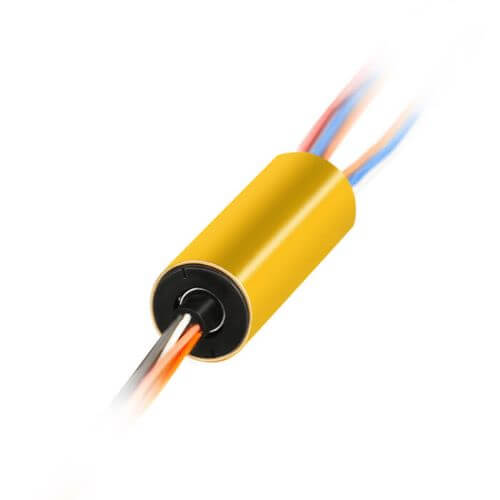
Importance of Mechanical Slip Rings
Mechanical slip rings serve a pivotal function in the realm of rotational machinery, where they assume the role of a critical interface between stationary and rotating systems. By transferring electrical power, signals, or data from a fixed structure to a continuously rotating component, their role becomes indispensable in ensuring operational efficiency in a variety of applications. Be it wind turbines, robotic arms, or even medical equipment such as CT scanners, mechanical slip rings provide the vital connection between these otherwise disparate systems.

One of the primary reasons mechanical slip rings have risen to prominence over other solutions, such as traditional wiring methods, lies in their ability to handle rotation without causing signal interruptions, wire entanglements, or premature wear. Traditional slip rings would often face issues stemming from the constant friction and wear in the brush/ring interface, leading to performance degradation and reduced lifespan. Modern mechanical slip rings have overcome these limitations with the help of advanced materials, contact technologies, and innovative designs.
In comparison to regular cabling and connectors, mechanical slip rings boast numerous advantages. They facilitate a continuous 360-degree rotation, enabling rotational devices to operate without hindrance or the constraints of limited rotation. This uninterrupted movement ensures a higher level of reliability and efficiency in various applications. Additionally, mechanical slip rings are designed to minimize electrical noise and deliver superior signal quality. As a result, they play a vital role in maintaining signal integrity in sensitive systems such as radar and satellite antennas.
Mechanical slip rings are also known for their durability and low-maintenance characteristics. They require minimal intervention and ensure smooth, long-lasting operations in harsh environments where traditional solutions may fall short. This makes them an ideal choice for critical applications in industries such as aerospace, defense, heavy machinery, and renewable energy.
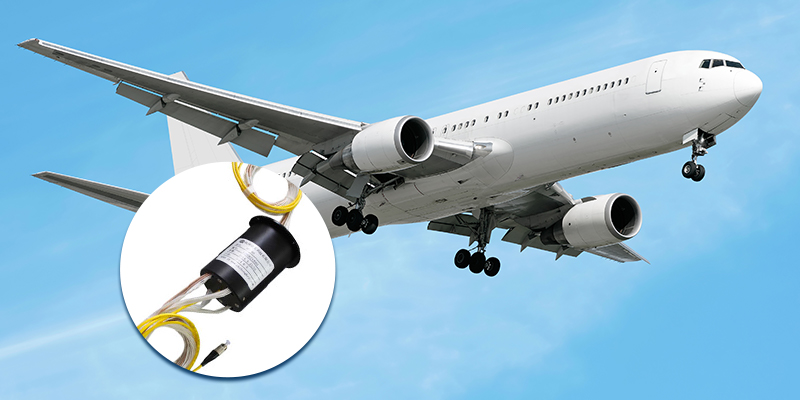
In essence, the importance of mechanical slip rings lies in their ability to bridge the gap between stationary and rotating systems, ensuring a seamless data and power transmission that surpasses the limitations of traditional solutions. By providing an essential interface characterized by reliability, efficiency, and durability, they truly deserve recognition as a linchpin in the success of myriad applications across diverse industries.
Working Principle of Mechanical Slip Rings
To appreciate the role that mechanical slip rings play in rotational machinery systems, it is essential to understand their working principle. At its most fundamental level, a mechanical slip ring functions as an electromechanical device that facilitates the transmission of power, signals, or data between stationary and rotating components. This is achieved through a clever combination of key components within its structure, each playing a vital part in ensuring the slip ring operates smoothly and effectively.
The core elements of a mechanical slip ring comprise rotating metal rings, stationary brushes made from carbon graphite, and a housing or base to support the assembly. The metal rings function as conductive paths for electrical signals or power, while the brushes maintain contact with the rings during rotation. The rings attach to the rotating part of the machine, either directly or through bus bars, while the brushes connect to the stationary part and slide along the surface of the rings, ensuring an uninterrupted connection.
The carbon graphite brushes provide several advantages in the slip ring system. Firstly, they offer a low friction coefficient, which minimizes wear and tear, extending the life of the assembly. Secondly, their properties enable efficient electrical conduction, which maintains signal integrity and optimal power transmission. Lastly, they are self-lubricating, which contributes to the overall low-maintenance nature of the slip ring.
During operation, the brushes glide gently over the rotating rings, creating a connection known as the brush-and-ring interface. The intimate contact between these elements enables the electrical current or signals to pass from the stationary brushes through the spinning metal rings and, subsequently, to the rotating part of the machine. This process occurs continuously as the slip ring rotates, ensuring seamless power and data transfer without hindrance from cables or connections.
It is the harmony between the key components—metal rings, carbon-graphite brushes, and supportive housing—that allows mechanical slip rings to achieve their primary function. By maintaining an unbroken connection between stationary and rotating parts, the slip ring effectively enables uninterrupted data and power transmission, championing efficiency and dependability in a plethora of applications across industries.
Types of Mechanical Slip Rings
One of the major strengths of mechanical slip rings, which reinforces their widespread applicability, is the diversity of their models and specializations. They come in a variety of forms, each bearing unique characteristics to meet a multitude of specific system requirements. Though the essential function remains the same – transmitting power and signals from a stationary unit to a rotating platform – the configuration varies depending on the application.
Capsule Slip Rings: These are small and lightweight, designed especially for compact spaces. Despite their size, they are capable of handling a variety of signals including data, video, and control signals, making them a popular choice for applications like CCTV cameras and rotary sensors.

Through-Bore Slip Rings: As the name suggests, these slip rings have a hole or ‘bore’ running through the center. This design allows for additional routing of hydraulic or pneumatic lines, as well as shaft mounting. These are typically employed in situations that require higher circuits and power handling capabilities, such as wind turbines and rotary index tables.
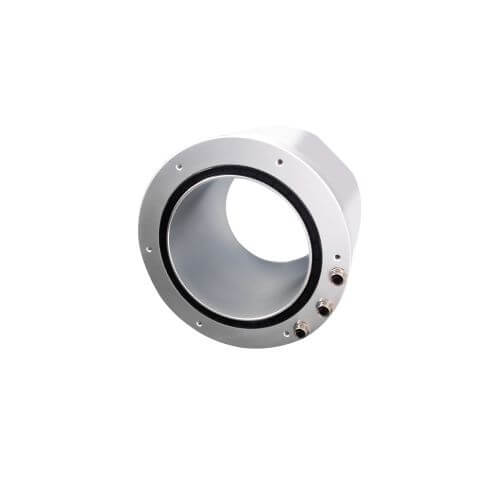
Pancake Slip Rings: These are flat and disc-shaped, opting for length over height to accommodate a shallow height restriction. While their design might limit the number of circuits they can accommodate compared to other ring types, they are useful in applications with limited axial space such as shielding systems and cable reels.

Wireless Slip Rings: Also known as rotary joints or rotary unions, these slip rings utilize advanced technology to transmit power and data without physical contact between rotating and stationary components. They are used in applications sensitive to wear and dust, or systems that require high-speed rotation.
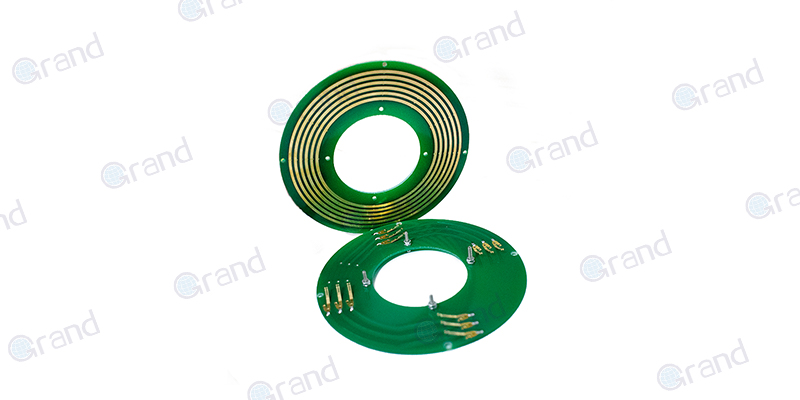
Fiber Optic Rotary Joints (FORJs): These are specialized slip rings for transmitting optical signals. Extremely useful in high-speed data transfer applications, they possess a very high bandwidth capacity. They are commonly found in advanced telecommunication systems, radar platforms, and HD video broadcasting systems.
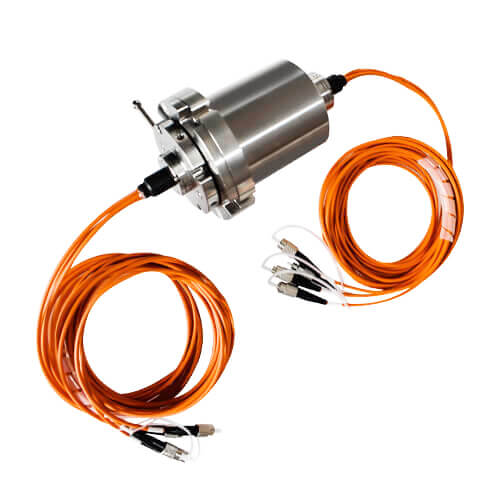
Compatibility is a vital factor to consider with each slip ring type. Systems may require a specific slip ring to manage certain power levels, signal modulations, or physical design constraints. Likewise, the configuration must be seamless; slip rings must integrate effortlessly into an existing system to ensure efficient functionality. For instance, a CCTV system would benefit from a compact model like a capsule slip ring due to space constraints, yet require components that guarantee high-resolution data transmission.
By understanding the varied types of mechanical slip rings and their unique specializations, one can better appreciate their versatility and the breadth of their applications. Whether the requirement is for high bandwidth, a compact design, or robust power transmission, there exists a suitable mechanical slip ring for it, hailing the adaptability and ingenuity of these essential components.
How to Choose the Right Mechanical Slip Ring
Choosing the right mechanical slip ring is a crucial step that significantly impacts the efficiency and lifespan of a given rotational device. Various factors come into play when making this decision, with specific system requirements, environmental conditions, space constraints, signal integrity, and durability being the key ones.
Specific System Requirements: It’s imperative to start with a clear understanding of the system needs where the slip ring will be utilized. Factors such as the type and volume of data or power to be transmitted, the speed of rotation, and the number of circuits required should be considered. For instance, if your system requires high-speed data transmission, a Fiber Optic Rotary Joint (FORJ) might be the most suitable choice.
Environmental Factors: The working environment can significantly influence the type of slip ring appropriate for your needs. Temperature range, moisture levels, and exposure to dust or corrosive substances can affect the slip ring’s performance and longevity. For systems that operate outdoors or under tough conditions like wind turbines or heavy machinery, slip rings with robust build quality and protective seals are necessary to withstand such harsh environments.
Space Constraints: The physical size and configuration of the slip ring must align with the available space within the machinery. Compact systems like CCTV cameras might benefit from small, lightweight slip rings such as capsule slip rings. On the other hand, systems with plenty of axial space might accommodate larger, high-performance models like through-bore slip rings.
Signal Integrity: This refers to the quality of the data or signal transmission. It should remain consistent and clear throughout the rotation, without interference or degradation, even at high speeds. Slip rings should have a low electrical noise factor for applications where signal integrity is crucial, such as radar systems, satellite antennas, or medical imaging devices.
Durability: Mechanical slip rings should have a long operational life and require minimal maintenance. This is particularly important for systems running continuously over long periods. Slip rings with features such as self-lubricating brushes and gold-on-gold contacts can boost durability and lengthen service intervals.
In summation, choosing the right mechanical slip ring is not a one-size-fits-all decision. It requires a comprehensive understanding of the system’s specific needs, the operating environment, space limitations, and data integrity requirements. This knowledge, combined with careful consideration of the slip ring’s durability, can aid you in selecting the most suitable and efficient mechanical slip ring for your system, thus enhancing its performance and longevity.
Mechanical Slip Rings Installation and Maintenance
Proper installation and maintenance are crucial for ensuring the optimal performance and prolonged lifespan of mechanical slip rings. Lack of adherence to these aspects can lead to inefficient operation, increased wear and tear, and potential failures. The following guidelines encompass key installation tips and maintenance measures to help you get the best out of your mechanical slip rings.
Installation:
- Review Manufacturer’s Instructions: Always begin by consulting the manufacturer’s guidelines on installation. These instructions typically cover essential considerations specific to the slip ring model, ensuring a seamless integration process.
- Preparation: Before installation, clean the slip ring components — especially the contact surfaces of the brushes and rings. Ensure that both the rotating part of the machine and the slip ring are free of dust, debris, or grease, which can hinder their performance.
- Alignment: Proper alignment of the slip ring components is fundamental in preventing irregular contact or stress on the assembly. Ensure the slip ring is mounted concentrically with the axis of rotation, and secure it using the appropriate fastening method suggested by the manufacturer to avoid any misalignment issues.
- Connection: Double-check that all electrical connections have been securely made by specified circuit requirements. Poor connections may lead to noisy signals or insufficient power transmission, which can impact the overall functionality of the system.
- Grounding: To avert electrical interference or damage, ensure that the slip ring housing is correctly grounded, following the manufacturer’s guidelines.
- Periodic Inspection: Adopt a regular inspection schedule to monitor the mechanical slip ring’s performance. This regimen should include checking connections, ascertaining that brushes are sliding smoothly, inspecting wear levels, and verifying that signals or power transmissions are consistent.
- Brush Replacement: Over time, the brushes will exhibit wear due to the inherent friction against the rotating rings. Monitor their condition and replace them when necessary, according to the manufacturer’s recommendations.
- Cleaning: To maintain optimal functionality, clean brushes and rings using a soft, lint-free cloth to prevent debris accumulation. However, avoid using aggressive cleaning agents or methods that may damage the surfaces.
- Lubrication: In instances where the brushes are not self-lubricating, apply an appropriate lubricant as recommended by the manufacturer. Proper lubrication plays a crucial role in reducing friction and prolonging the service life of the slip ring assembly.
By following these installation and maintenance guidelines, you can ensure that your mechanical slip rings perform reliably and efficiently while maximizing their operational lifespan. An integral combination of proper installation and diligent maintenance goes a long way toward getting the best out of your mechanical slip ring investment.
Mechanical Slip Rings Troubleshooting and User Solutions
Mechanical slip rings, like any device, may face technical issues from time to time. Addressing these common problems usually requires a methodical approach involving diagnostics and resolutions. As a user, it’s important to identify when you can safely handle the problem on your own and when to seek professional assistance. Below, we will discuss the primary mechanical slip ring technical issues and suitable solutions.
Common Technical Issues and Resolutions:
- Intermittent or Degrading Signal Transmission: If the slip ring is experiencing intermittent signal loss or degradation in its transmission quality, check the following:
- Ensure proper alignment between the brush and the ring, avoiding unnecessary stress or wear.
- Inspect brush wear levels and replace the brushes if needed.
- Check the electrical connections for any damage, corrosion, or loose wiring, and rectify the problem if discovered.
- Overheating: Excessive temperatures in the slip ring can indicate several issues, including:
- Poor alignment between the slip ring and the rotation axis, leading to uneven load distribution; realign the components if needed.
- Inferior lubrication; apply the recommended lubricant in the proper amount as suggested by manufacturer guidelines.
- Abnormal wear within the components; inspect the slip ring assembly and replace the worn-out brushes or other components if necessary.
- Unusual Noise or Vibration: The presence of noise or vibrations can often point to mechanical issues:
- Verify that the slip ring is installed accurately, without any loose or improperly fitted parts.
- Ensure that the brushes are sliding smoothly on the ring; adjust or realign the components if required.
- Inspect the components for any signs of damage or wear, replacing parts if needed.
When to Seek Professional Assistance:
While some issues can be managed by users through proper diagnostics and resolutions, certain circumstances warrant seeking the assistance of a technician or professional. These situations include:
- Complex or persistent problems that cannot be easily pinpointed or resolved by standard troubleshooting methods.
- Involvement of high-voltage or high-current devices that entail risks when attempting to diagnose or resolve issues by amateurs.
- Advanced systems or applications tied to proprietary technologies that may involve specialized servicing or proprietary parts replacement.
- Slip rings with a warranty; attempting self-repairs or modifications can void the warranty, necessitating the involvement of authorized service centers.
By understanding common mechanical slip ring issues, performing thorough diagnostics, and applying appropriate resolutions, you can often address technical problems independently. However, assessing the complexity and potential risks is paramount. Remember that seeking professional assistance is a crucial decision when a situation involves high levels of technical expertise or substantial safety concerns.
The Future of Mechanical Slip Rings
Mechanical slip rings occupy a critical role in a broad range of applications, enabling the transfer of power and data between stationary and rotating components. Given the rapid progression of technology and the increasing demand for efficient and reliable systems, the future of mechanical slip rings looks promising. This section will delve into current trends, future predictions, and the integration of technological advancements within the mechanical slip ring industry.
Current Trends and Future Predictions:
- Miniaturization: With the growing trend towards smaller devices and systems, the demand for compact and lightweight slip rings has been increasing. Expect to see more miniature and micro-slip rings that offer high performance without sacrificing space.
- Higher Speed and Data Volume: As the need for high-speed data transmission and larger data volumes continues to intensify, future slip rings will likely be designed to handle these demands. Technological advancements may lead to innovative solutions that can reliably handle higher rotational speeds and data rates.
- Low Maintenance and Longer Lifespan: The pursuit of lower maintenance and longer-lasting components remains a constant trend. Future mechanical slip rings will likely incorporate materials and designs optimized for durability and reduced maintenance needs.
Integrating Technological Advancements:
- Advanced Material Use: The use of advanced materials like precious alloys and fiber optics can enhance the performance and durability of slip rings. Further advancements in material sciences may allow for the development of slip rings capable of withstanding extreme environmental conditions or handling higher power and data transmission loads.
- Integration of Smart Technologies: The incorporation of smart technologies into mechanical slip rings can lead to better performance monitoring, predictive maintenance, and improved efficiency. Coupling IoT (Internet of Things) devices with slip rings can enable real-time monitoring and failure prediction, reducing downtime and extending operational lifespan.
- Improved Manufacturing Techniques: Advances in manufacturing methods, like 3D printing or precision robotics, could result in more complex and finely tuned slip ring assemblies. These techniques can increase accuracy, reduce production times, and drive down costs.
The integration of established trends with emerging technological advancements signals an exciting future for the mechanical slip ring industry. As the requirements for data and power transmission become more demanding, expect to see a continual evolution in slip ring design, materials, and applications. This evolution will deliver on the promise of increasing efficiency, durability, and effectiveness – aligning the future of mechanical slip rings with the ever-accelerating pace of technological progression.
Conclusion
Mechanical slip rings, often overshadowed by more visible components of machinery, play an indispensable part in seamless data and power transfer in rotational machinery systems. By choosing the right slip ring, following proper installation and maintenance procedures, and employing effective troubleshooting techniques, you can ensure their optimal functionality. The future of mechanical slip rings continues to evolve, promising ever-improving efficiency and reliability.
See What We Can Do
